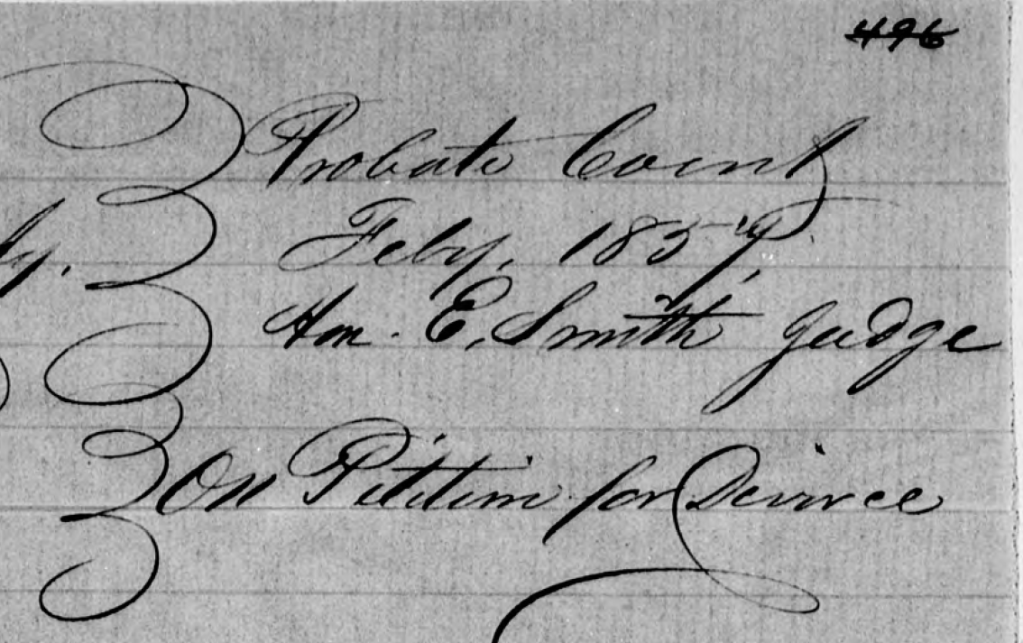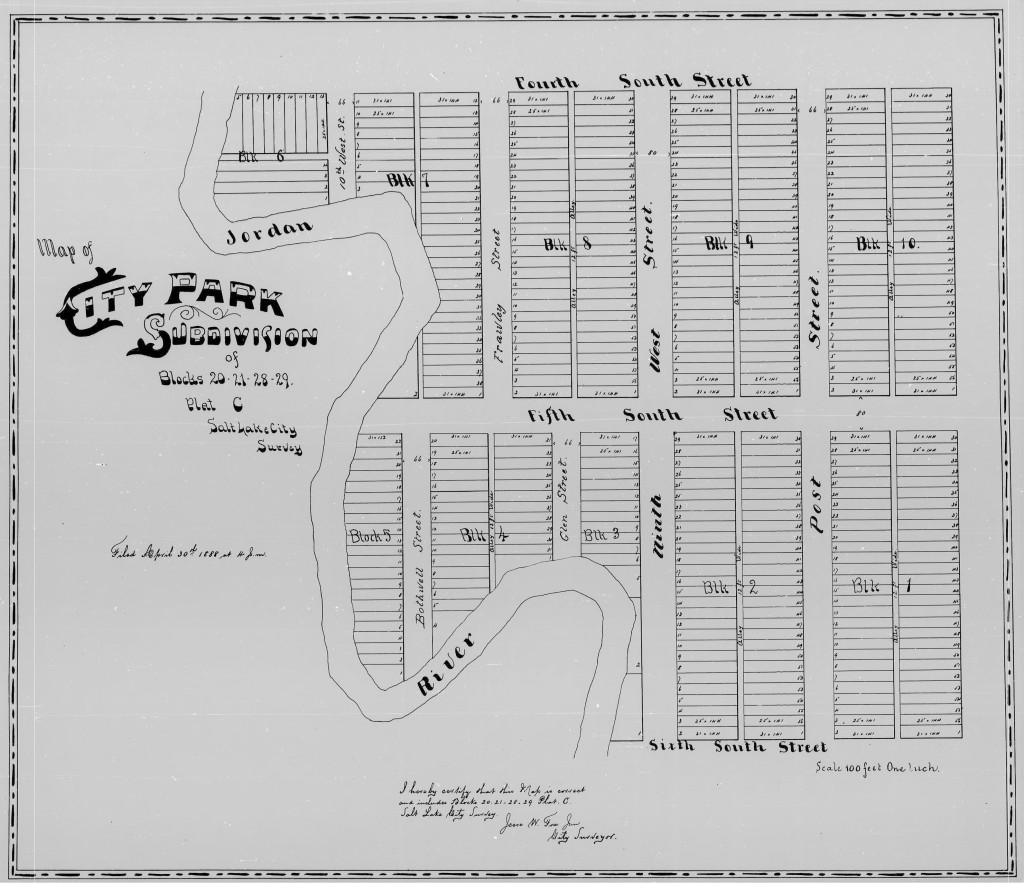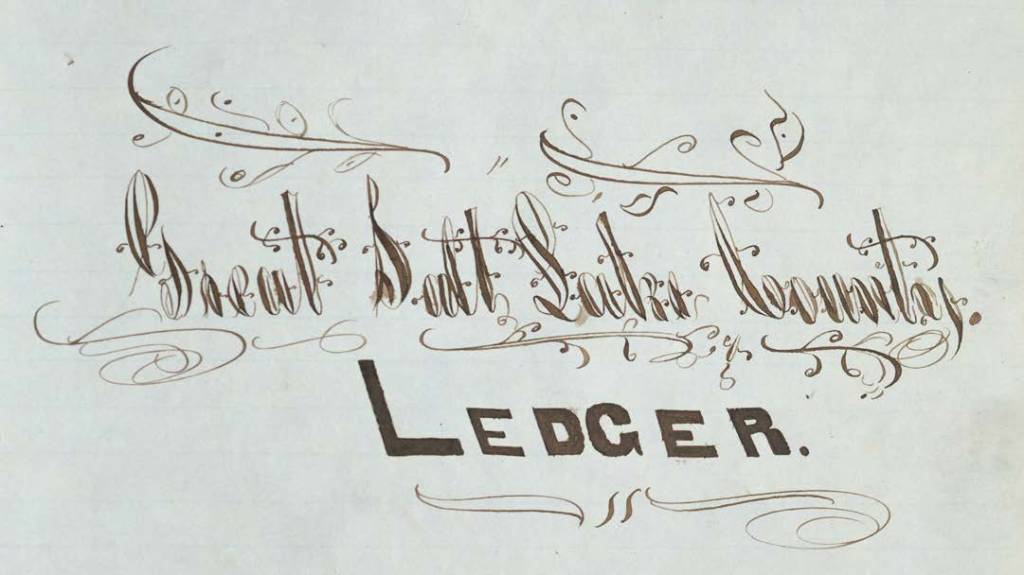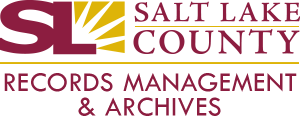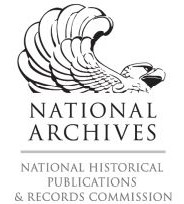The history of the American West is filled with fascinating moments of conflict and compromise. One collection at the Archives, the Probate Court Land Title Certificates, provides a window into exploring one of those moments in Salt Lake County’s own history.
For nearly two decades after the members of The Church of Jesus Christ of Latter-Day Saints first settled in Utah, land ownership in the territory was determined by the Utah Territorial government. This territorial government established its own methods of surveying and of acquiring land title. These titles however, weren’t recognized by the Federal Government. In fact, by federal law all land in Utah was considered to be in public domain under the provisions of the 1848 Treaty of Guadalupe Hidalgo. According to previously established federal law governing the territorial process, the determination of land title in new territories was supposed to be conducted through a federal land office and in accordance with federal government surveys.
That 22 year delay between the initial settlement of Utah and the establishment of a federal land office in 1869 reflects the complicated relationship between the Territory of Utah, its predominantly Mormon leadership, and the United States government. In many cases, both sides had reason to be mistrustful of the other.
For example, when the first federal Surveyor General David H. Burr was sent to Utah in July 1855, he faced significant opposition from Utah’s settlers and officials. In one letter territorial governor Brigham Young referred to Burr as a “snarling puppy.” The worst of this opposition culminated in violent attacks against Burr’s surveyors and clerks and sent Burr and his employees fleeing from the territory in 1857.
On the other side of the conflict however, Mormon officials and settlers accused Burr of widespread fraud, a charge that was later substantiated by his federally appointed successor Samuel C. Stambaugh. Stambaugh found that Burr had not only perpetrated fraud against people in Utah, but against the federal government as well. In addition, Burr’s letters to officials in Washington D.C. misrepresented the nature of Brigham Young’s control over territorial land claims in Utah and stated that he did not consider Mormon settlers to be U.S. citizens.
By the time the federal land office was finally opened in Utah in March 1869, the size and complexity of Salt Lake City made it difficult to resolve land title using existing federal laws. Because of this, the U.S. Congress eventually passed specific laws allowing the territorial legislatures to create a process by which individuals could gain title to land in these already settled towns. The Utah Territorial Legislature set up a system for individuals, corporations, and associations to present a claim to the territorial probate courts, which at that time in Utah had jurisdiction not only over the settlement of estates, but also over civil and criminal matters.
The Land Title Certificates collection at the Salt Lake County Archives is a result of this process. It contains the land title certificates granted to petitioners from 1871 to 1879 which finally provided federally recognized land title to the people of Salt Lake County. And though the conflict over land surveying and land title in Utah was a reflection of the strained relationship between The Church of Jesus Christ of Latter-Day Saints and the Federal Government, this collection demonstrates that a full range of individuals, business, and cultural institutions were already active in Salt Lake County.
One example of this is this land title certificate granted to Daniel Tuttle, who was the Episcopal bishop for Montana, Idaho, and Utah.

As you can see in the image above, the probate court certified on November 7, 1872 that Tuttle was the rightful owner of lot 2, block 43, plat A in Salt Lake City. This location was significant because it was the location of St. Mark’s Cathedral, one of the first non-LDS church buildings in Utah. The cathedral, which still stands today at 231 East 100 South, had been completed just over a year earlier, and the first services were held there on September 3, 1871.
A finding aid and index to the Land Title Certificates collection, organized by the name of the person or organization petitioning the court, can be found on the Archives website.
References:
Alexander, Thomas G., “Conflict and Fraud: Utah Public Land Surveys in the 1850s, the Subsequent Investigation and Problems with the Land Disposal System,” Utah Historical Quarterly, Spring 2012, p. 108.
Beless, James W. Jr., “The Episcopal Church in Utah: Seven Bishops and One Hundred Years,” Utah Historical Quarterly, January 1968, p. 77.
Utah State Archives’ Research Guide, “Original Land Titles in Utah Territory,” http://archives.utah.gov/research/guides/land-original-title.htm
Blog post contributed by Dr. Jenel Cope, Salt Lake County Processing Archivist.
